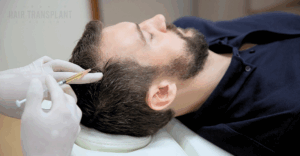10 Important Things I Wish I Knew Before My Hair Transplant Surgery
Hair loss can be a distressing problem, affecting self-esteem and confidence. Thankfully, modern medical advancements offer solutions like hair transplant surgery, which can restore both the hair and the confidence of many individuals. Hair transplant surgery is one of several types of hair replacement surgery—a broader category that includes various surgical methods for restoring hair, such as hair transplant, flap surgery, tissue expansion, and scalp reduction. Doctors have been performing hair transplants since the 1950s, but techniques have changed significantly. However, before undergoing the procedure, it’s essential to grasp its intricacies, potential risks, and the recovery journey ahead.
Understanding the process, including consultations with surgeons, the surgical procedure itself, and post-operative care, is paramount for informed decision-making. Additionally, patients should consider factors like costs and insurance coverage, as hair transplant surgery is often considered an elective cosmetic procedure.
Despite these considerations, many find the benefits of regained hair and confidence well worth the investment and recovery process.
Introduction to Hair Restoration
Hair restoration is a specialized field of cosmetic surgery focused on bringing back hair to areas of the scalp affected by baldness or thinning hair. The most widely used and effective approach is hair transplant surgery, also known as hair restoration surgery. This procedure is designed to improve hair density and coverage, helping individuals achieve a natural-looking hairline and a fuller head of hair. Thanks to significant advancements in technology and surgical techniques, hair transplantation has become a popular and reliable solution for those experiencing hair loss, whether due to male pattern baldness, female pattern hair loss, or other causes. By moving healthy hair to thinning or bald areas of the scalp, hair restoration offers a permanent and natural-looking result, helping patients regain both their hair and their confidence.
What Is the Most Important Part of a Hair Transplant?
The success of a hair transplant hinges largely on selecting the appropriate surgeon and clinic. The significance of this decision directly impacts the procedure’s outcome and the patient’s satisfaction.
It’s crucial to conduct thorough research to find a skilled and experienced surgeon who specializes in hair restoration. Choosing a surgeon with expertise in a range of hair transplant procedures ensures you receive the most suitable and effective treatment for your specific needs.
Potential patients should scrutinize the credentials, certifications, and affiliations of the surgeon, ensuring they possess the requisite expertise in the field. Examining reviews and testimonials from past patients can give you an idea of the surgeon’s skills, professionalism, and the quality of care offered by the clinic.
Additionally, reviewing before-and-after photos of past procedures can help evaluate the surgeon’s track record and the clinic’s success in achieving natural-looking results. By prioritizing the selection of a reputable surgeon and clinic, individuals getting a hair transplant can greatly increase the chances of a successful result for themselves and a positive experience overall.
Before delving into the intricacies of hair transplant surgery, it’s essential to grasp several key considerations.
Here are ten essential factors to know before undergoing a hair transplant:
Understanding the Procedure
Hair transplant surgery is a precise procedure that moves hair by taking healthy hair follicles—known as hair grafts—from the patient’s donor area, typically the back or sides of the head. In the case of follicular unit transplantation (FUT), also called strip surgery, a strip of scalp tissue is removed from the donor area and then dissected into individual grafts. These grafts, each containing one or more hairs, are meticulously prepared for transplantation. Most people remain awake during hair transplant surgery but receive medication to numb the scalp. The donor hair, which comes from the scalp tissue of the patient’s donor area, is then implanted into the recipient site—areas where there is baldness or thinning. The amount of hair, or how much hair, that can be transplanted depends on the availability of donor hair and the extent of hair loss. Each hair graft contains a hair follicle, which is the biological unit responsible for hair growth. The transplanted tissue, including the hair follicle, survives and grows in the recipient site, resulting in a fuller and more natural-looking head of hair. It’s crucial for individuals considering this surgery to thoroughly understand the intricacies of the procedure, including the different techniques and methods available.
Who is a Good Candidate for a Hair Transplant
Not everyone experiencing hair loss is automatically a good candidate for a hair transplant. Ideal candidates are those who have noticeable hair loss or thinning and have not achieved satisfactory results with other hair growth treatments. One of the most important factors is having enough hair at the donor site—typically the back or sides of the scalp—to allow for successful graft extraction. Good overall health is also essential, as the hair transplant procedure is a form of surgery and requires the body to heal properly. Individuals with certain medical conditions, such as autoimmune disorders, uncontrolled diabetes, or hypertension, may not be suitable for hair transplantation. Additionally, women who are pregnant or have recently given birth are generally advised to postpone the procedure. A thorough consultation with a hair restoration specialist is the best way to determine if you are a good candidate, as the doctor will assess your hair loss pattern, restoration goals, and medical history to recommend the most effective approach.
Realistic Expectations
While hair transplant surgery can offer remarkable results for many individuals, it’s essential to have realistic expectations. Hair transplant permanent results are possible, but some hair grafts may not survive, and multiple procedures may be needed for optimal results. This procedure may not be suitable for everyone, and the results can differ based on factors like hair texture, skin type, and the degree of hair loss. Consulting with a qualified surgeon can help individuals understand what outcomes are achievable based on their unique circumstances.
Types of Hair Transplant Methods for Hair Follicles
Hair transplant surgery typically involves two main techniques: follicular unit transplantation and follicular unit excision.
- Follicular Unit Transplantation (FUT): In FUT, a strip of skin containing hair follicles is surgically removed from the donor site and then separated into individual follicular units for transplantation.
- Follicular Unit Excision (FUE): In FUE, individual hair follicles are taken directly from the donor site using a specialized punch tool. This method leaves tiny, less noticeable scars and typically has a shorter recovery time than FUT.
In the past, hair restoration was performed using hair plugs, which involved transplanting circular grafts of hair. This older method often resulted in an unnatural appearance compared to the more natural-looking results achieved with modern FUT and FUE techniques.
A hairline transplant is a specialized procedure focused on restoring or improving a receding hairline, often used to address male pattern baldness and achieve a more natural, cosmetic result.
Another surgical option is flap surgery, where a section of scalp with healthy hair and its blood supply is partially lifted and repositioned to cover bald areas. Flap surgery can be used as an alternative or complement to traditional hair transplant procedures.
Each method comes with its pros and cons, so it’s important to talk to your surgeon to figure out which option is best for you based on your individual needs and preferences.
Understanding Follicular Unit Extraction (FUE)
Follicular Unit Extraction (FUE) is a cutting-edge, minimally invasive hair transplantation technique that has become increasingly popular for its natural-looking results and minimal downtime. In FUE, individual follicular unit grafts—each containing one to four hair follicles—are carefully removed from the patient’s donor area, usually at the back or sides of the scalp. These follicular unit grafts are then meticulously transplanted into the thinning or bald areas, allowing for precise placement and a natural hairline. One of the major advantages of FUE is that it does not require stitches and does not leave a visible linear scar, making it an attractive option for those who prefer to wear their hair short. The procedure uses advanced technology and automated devices to ensure accuracy and efficiency. While FUE offers a permanent solution to hair loss, it is important to have realistic expectations and understand that the success of the procedure depends on the skill of the surgeon and the quality of the facility. With the right expertise, FUE can deliver a fuller, natural-looking head of hair and long-lasting results.
Potential Side Effects
Like any surgical procedure, hair transplant surgery carries risks, including infection, scarring, and swelling. Local anesthesia is used during the procedure to numb the scalp, ensuring patient comfort. As a result, patients can expect their scalp numb during and immediately after the surgery due to the anesthesia. It’s crucial for individuals considering this procedure to be aware of these potential side effects and discuss them thoroughly with their surgeon beforehand. Understanding the risks involved can help people make a well-informed decision about whether hair transplant surgery is the right choice for them.
Preparation Before Surgery
Before having hair transplant surgery, your surgeon will give you detailed instructions to follow to achieve the best results and decrease the chance of complications. These instructions may include avoiding certain medications, alcohol consumption and smoking in the days leading up to the procedure. By following these guidelines diligently, individuals can help ensure a smooth and successful surgery.
Aftercare and Recovery
The recovery phase following hair transplant surgery is vital for obtaining optimal results. In the days following the procedure, individuals may experience some discomfort, swelling, and scabbing in the donor and recipient areas. Swelling and initial healing typically improve over a few weeks after the procedure. After a hair transplant, your scalp may be very tender and you may need to take pain medications for several days. It’s essential to follow your surgeon’s instructions for proper aftercare, which may include gentle washing of the scalp, avoiding strenuous activities, and taking prescribed medications as directed. Proper aftercare can help promote healing and minimize the risk of complications.
Hair Transplant Results
Patience is key when seeing the results of a hair transplant. While some people may start to notice new hair growth a few months after the procedure, it can take a year or longer for the transplanted hair to fully grow and blend in with the existing hair. Most people will see 60% of new hair growth after 6-9 months. Understanding the timeline and stages of hair growth post-surgery can help individuals manage their expectations and stay patient throughout the process.
Cost Considerations
Hair transplant surgery can be a vital investment, and the cost varies depending on factors like the surgeon’s expertise, the extent of the procedure, and the location of the clinic. The cost of a hair transplant generally ranges from $4,000 to $20,000, depending on the amount of hair being moved. It’s essential for individuals considering this procedure to factor in the cost of the surgery, as well as any additional expenses for aftercare products and follow-up appointments. While the upfront cost may seem daunting, many individuals find that the long-term benefits of restored confidence and self-esteem outweigh the financial investment.
Long-Term Maintenance
While hair transplant surgery provides permanent results, it’s important to understand that ongoing maintenance may be required to preserve the results. This may include using specialized hair care products, such as shampoos and conditioners designed to promote hair growth and thickness, and adopting a healthy lifestyle to prevent further hair loss. Consulting with your surgeon can help develop a personalized maintenance plan to ensure long-lasting results.
Consultation with a Specialist
Before committing to hair transplant surgery, it’s important to arrange a consultation with a qualified hair restoration specialist. In this meeting, you can talk about your goals, worries, and hopes with the surgeon. They can then evaluate if the procedure is right for you and suggest the best treatment plan. A thorough consultation allows individuals to make informed decisions about their hair restoration journey and ensures they are well-prepared for the surgery and recovery process.
Conclusion
Hair transplant surgery can be transformative for people who lose hair due to conditions like androgenetic alopecia or a receding hairline. Hair transplants typically use healthy hairs from the back of the head, where original hair is more resistant to hair loss, to restore a full head of hair. Some surgical methods, such as flap surgery, preserve the original blood supply to the transplanted tissue, supporting proper healing. Hair transplant work involves relocating original hair to balding areas, aiming for natural-looking and lasting results. The effectiveness of hair transplants depends on the quality of the original hair and the skill of the surgeon.
It’s essential to approach the procedure with caution and thorough research. By understanding the process, managing expectations, and choosing a reputable surgeon, you can increase the likelihood of achieving successful and satisfying results. Remember, the journey to restored confidence begins with informed decisions and careful planning.






